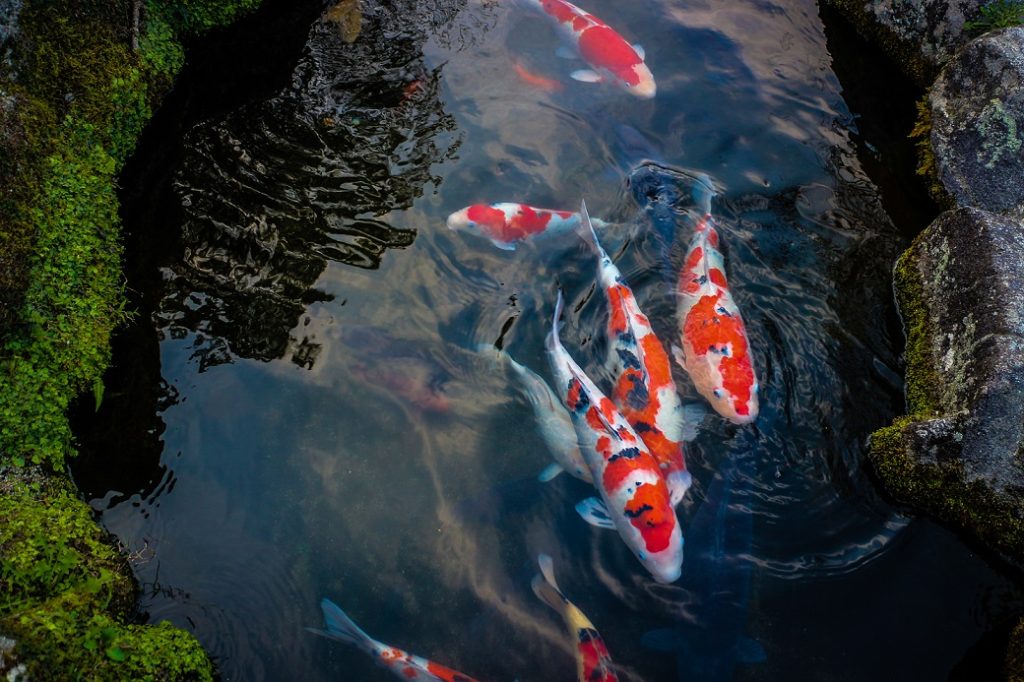Descendants of the common carp, koi, otherwise known as nishikigoi, are primarily brown in a non-controlled environment. A history of extensive selection and focused and decades old breeding have provided the rich colors of red, golds, bright oranges, and whites all of us have come to love.
Something that began in the 17th century, when Chinese rice farmers began keeping carp, the practice soon found its way to Japan where farmers began breeding mutant carps for their slight color variations, or the koi we know today. The practice spread to Europe and eventually North America in the late 20th century.
Today’s koi display a stunning range of colors and patterns. Here are a few of the most notable:
- Asagi – a blue-gray body with red pectoral fins and undersides
- Bekko – any koi fish of yellow, red, or white colors with black spots along the back
- Goshiki – translates to five colors including white, red, black, blue and dark blue
- Hariwake – platinum fish containing orange or yellow patterns
- Kohaku – majority white body with details of red
- Koromo – a white bodied fish with darker blue or even black scales over red
- Kumonryu – a white bodied fish with patterns of black
- Matsuba – pinecone pattern over entire body
- Ogon – any solid colored koi
- Sanke – a colored fish with no black on the head
- Showa – a black bodied fish with white and red patterns
- Shusui – a white body containing blue scales on the dorsal area and a red underbelly
- Tancho – fully white body with red circles on head
Most koi keepers seek out the color and pattern combinations they need to round out their pond’s “look” and color. At Hikari®, our unique line of koi diets and water care products can help you bring out that championship color and form your fish desire!

